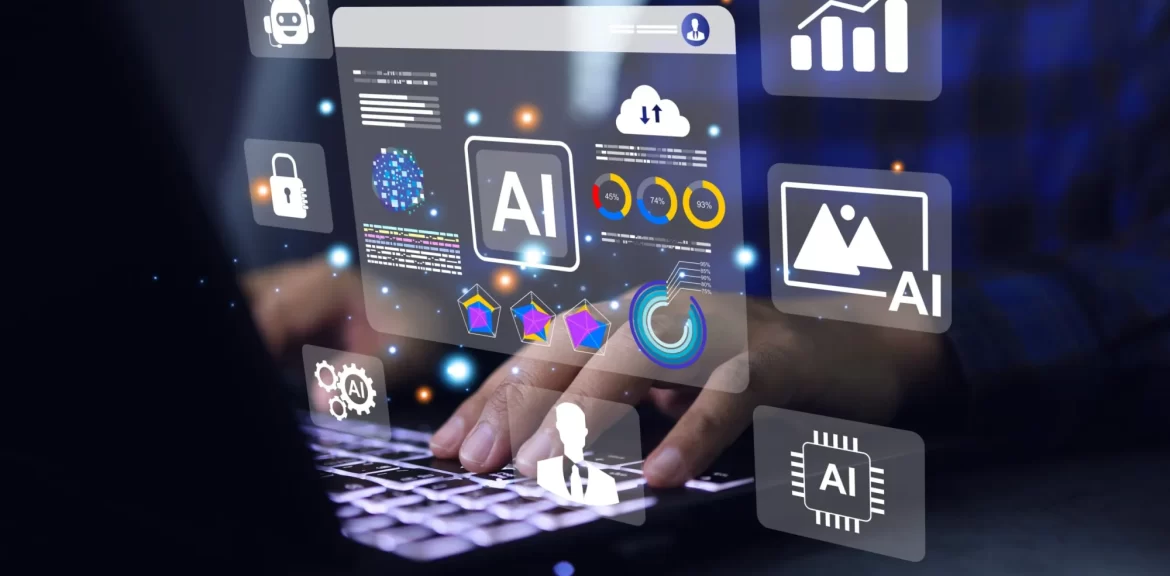In today’s digital era, data is one of the most valuable assets for businesses. With vast amounts of information being generated every second, making sense of this data has become both a challenge and an opportunity. Enter Artificial Intelligence (AI) — a technology that is not only transforming industries but also revolutionizing the field of data analytics. By enabling faster, smarter, and more accurate decision-making, AI is reshaping how businesses analyze and utilize their data.
From Traditional to Intelligent Analytics
Traditional data analytics typically involved manual processes, static reports, and reactive insights. Analysts would gather data, clean it, and use statistical tools to find patterns or trends — a process that often took days or even weeks. While this method provided value, it was time-consuming and often limited in scope.
AI-driven analytics, on the other hand, leverages machine learning (ML), natural language processing (NLP), and advanced algorithms to automate data processing and uncover insights in real time. These systems can analyze structured and unstructured data from multiple sources, learn from new data over time, and even predict future outcomes based on historical trends. This shift from descriptive to predictive and prescriptive analytics is a game-changer for businesses.
Real-Time Decision-Making and Speed
One of the most significant advantages of AI in data analytics is speed. AI algorithms can process massive volumes of data in a fraction of the time it would take a human analyst. This real-time processing capability allows organizations to make faster decisions, respond to changes in the market, and capitalize on new opportunities as they arise.
For example, in the retail industry, AI can analyze customer purchasing patterns and inventory levels instantly to optimize stock management. In finance, AI tools can detect fraudulent transactions in real time, reducing risks and improving security. This speed and responsiveness are helping companies stay competitive in rapidly evolving markets.
Enhanced Accuracy and Reduced Human Error
Manual data analysis is prone to errors, whether due to miscalculations, data entry mistakes, or cognitive bias. AI eliminates much of this risk by automating repetitive tasks and applying consistent logic. Machine learning models continuously improve as they are exposed to more data, enhancing accuracy over time.
By reducing the margin for error, AI ensures that business decisions are based on reliable insights. This is particularly important in sectors like healthcare, where accurate data interpretation can directly impact patient outcomes. AI-powered analytics tools can assist doctors in diagnosing conditions by analyzing medical images and patient data more accurately than ever before.
Personalized Insights and Customer Understanding
Understanding customer behavior is crucial for businesses aiming to enhance user experience and build loyalty. AI enables companies to dive deeper into customer data and uncover personalized insights that were previously inaccessible. By analyzing browsing history, purchase behavior, social media activity, and more, AI systems can segment customers and tailor offerings to individual preferences.
For instance, streaming platforms like Netflix and Spotify use AI to recommend content based on users’ past interactions. Similarly, e-commerce sites use AI-driven recommendation engines to suggest products, increasing engagement and boosting sales. This level of personalization helps businesses connect with their audiences on a more meaningful level.
Predictive and Prescriptive Analytics
AI is not just about understanding what has happened — it’s about predicting what will happen and prescribing the best course of action. Predictive analytics uses historical data and machine learning algorithms to forecast future trends, behaviors, and outcomes. Prescriptive analytics goes a step further by suggesting actions to achieve desired results.
For example, in supply chain management, AI can forecast demand, predict disruptions, and recommend adjustments to production schedules. In marketing, AI can predict campaign performance and suggest the most effective strategies for customer engagement. These capabilities empower businesses to move from reactive to proactive decision-making.
Democratization of Data Analytics
Previously, data analytics was the domain of specialists with advanced technical skills. AI is changing this by making analytics more accessible to non-technical users. With the help of user-friendly interfaces, natural language processing, and automated insights, business users across departments can now interact with data without needing to write complex code or queries.
AI-powered tools like dashboards and conversational analytics allow users to ask questions in plain language and receive understandable answers. This democratization of data ensures that decision-making is not confined to data scientists but is distributed across the organization.
Challenges and Ethical Considerations
While the benefits of AI in data analytics are immense, it’s important to acknowledge the challenges. Data privacy, algorithmic bias, and lack of transparency in AI decision-making are growing concerns. Businesses must ensure that their AI systems are ethical, secure, and compliant with regulations such as GDPR.
Additionally, organizations must invest in training and change management to help employees adapt to AI-driven workflows. AI is a powerful tool, but human oversight remains crucial to ensure that insights are interpreted correctly and used responsibly.
Conclusion
AI is undeniably transforming data analytics, unlocking new levels of efficiency, accuracy, and insight. From real-time decision-making to personalized experiences and predictive intelligence, AI empowers businesses to harness their data like never before. As AI technologies continue to evolve, they will play an increasingly central role in shaping data strategies and driving business success.
For organizations looking to stay ahead of the curve, now is the time to embrace AI-powered analytics — not just as a tool, but as a catalyst for innovation and growth.

